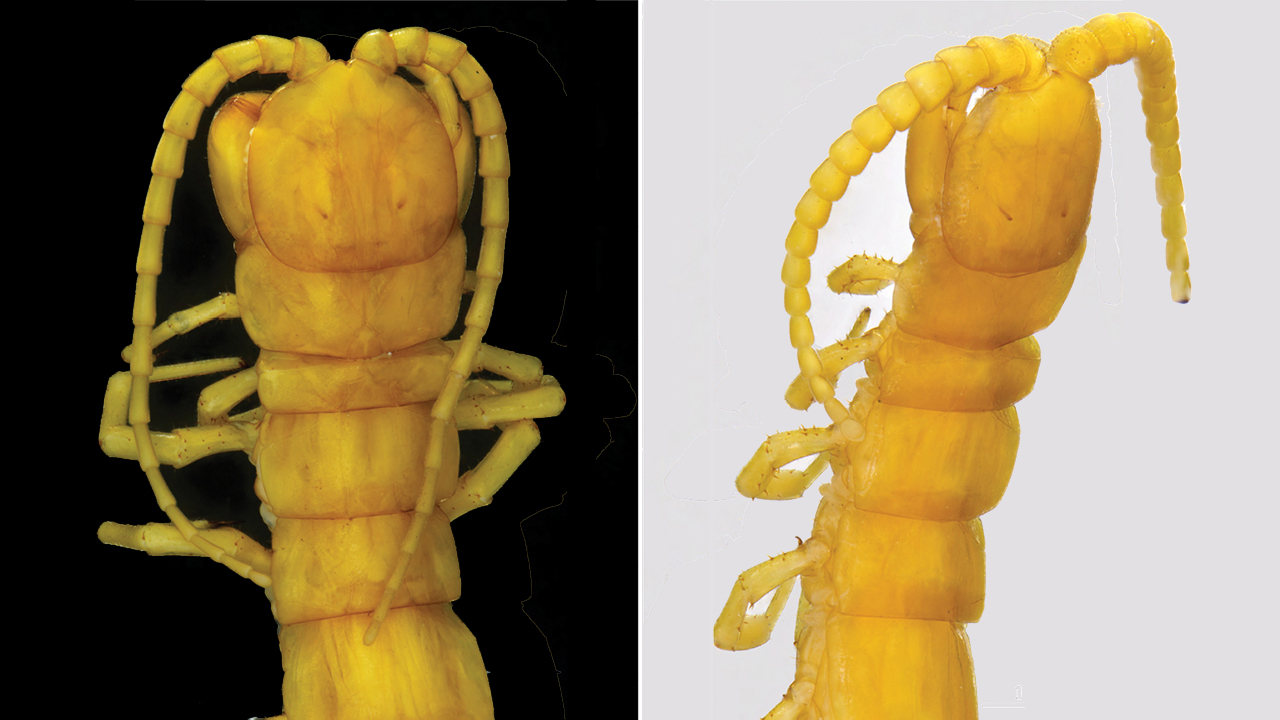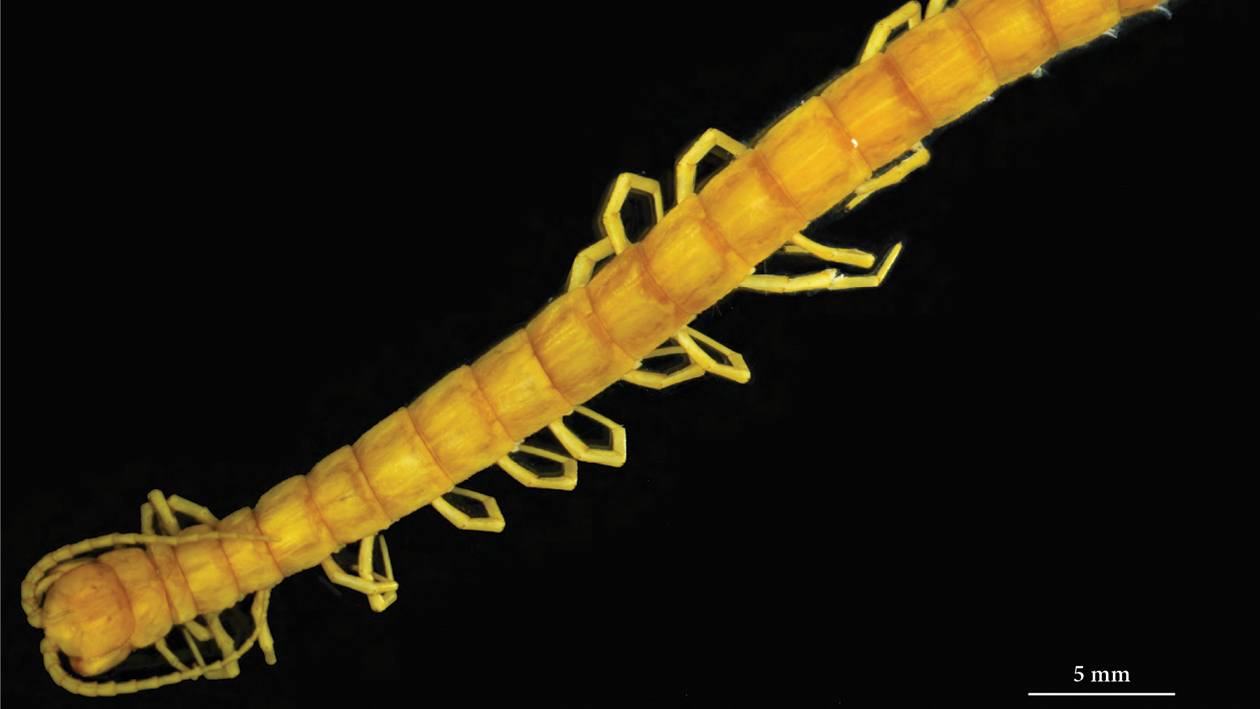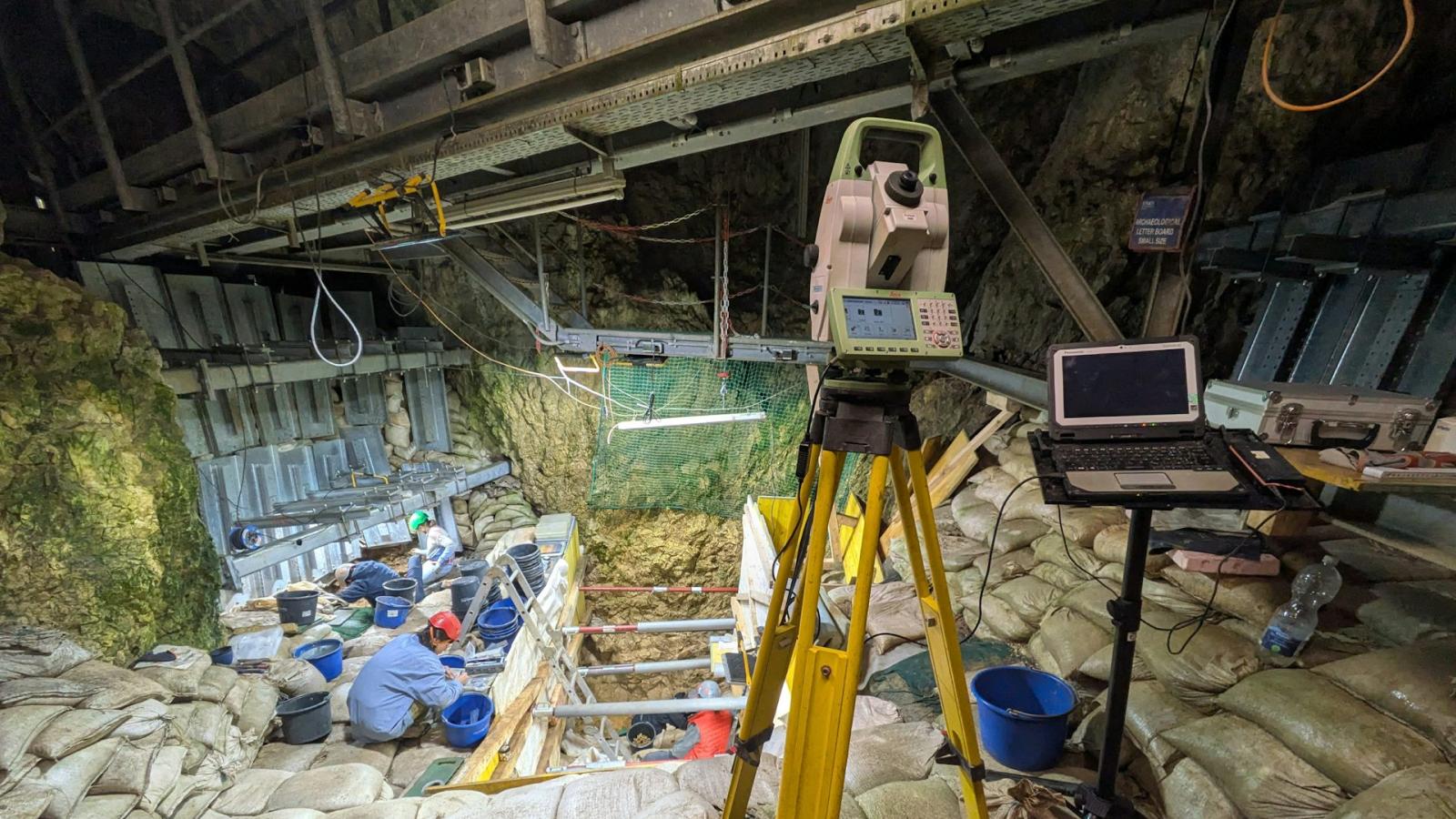Deadly centipede 'king' rules over a poison hellscape cave
Romania's toxic Movile Cave is home to more than 50 species.

A venomous centipede is the top predator in a pitch-black poison cave that hasn't seen daylight in more than 5.5 million years.
Located in Romania, Movile Cave is over 65 feet (20 meters) below the surface, and its warm, moist air is low in oxygen and thick with toxic gasses, which feed chemosynthetic bacteria. Yet despite these seemingly hellish conditions, the cave hosts a diverse community of spiders, scorpions and other arthropods, along with snails, earthworms and cave leeches.
Now, scientists have added a newfound species to the list: a centipede that they named Cryptops speleorex, "which can be translated to the 'king of the cave,'" researchers said in a statement.
Related: Creepy crawlies & flying wonders: Incredible cave creatures
The "king" measures no more than 2 inches (52 millimeters) long, but it is the largest of the cave's predatory arthropods "by far," ruling its domain with deadly bites, the researchers reported in a new study, published online Dec. 16 in the journal ZooKeys.
Since Movile Cave's discovery in 1986, few people have explored its dangerous depths. The air is high in hydrogen sulfide, methane, ammonia and carbon dioxide, and oxygen is in short supply, with levels in some parts of the cavern as low as 7% (the average oxygen level aboveground is typically about 21%). Though the air temperature is a relatively comfortable 70 degrees Fahrenheit (21 degrees Celsius), relative humidity is 100% and air circulation is close to zero, the scientists wrote.
Entering the cave is fraught with danger, leading explorers down a long, narrow shaft and through winding limestone tunnels that finally open into a main cavern with a lake, the BBC reported in 2015. Exploring the rest of the cave system requires diving into the lake and navigating through tight passageways underwater — in complete darkness — that feed into mini-caves called airbells, according to the BBC.
Get the world’s most fascinating discoveries delivered straight to your inbox.
In this dark, isolated and poisoned kingdom live 51 species of invertebrates, 34 of which are found only in Movile Cave, the study authors reported. The newly described cave king, C. speleorex, has a brownish-yellow body with pale yellow antennae, and its yellow legs are studded with 13 to 17 "saw teeth." As the biggest invertebrate predator in the cave ecosystem, this centipede stands at the top of the food chain; other researchers previously observed C. speleorex snacking on primitive insects, spiders, beetles and isopods (shrimp-like crustaceans).
The centipede closely resembled the centipede C. anomalans, which is found worldwide, and was most similar to C. anomalans populations in Romania and Serbia. However, certain features in the newfound species, such as longer antennae and more saw teeth on its legs, indicated that it possessed unique sensory specializations to help it survive in the lightless cave.
The researchers' findings "revealed that the Movile centipede is morphologically and genetically different" from its terrestrial centipede cousins, "evolving from its closest surface-dwelling relative over the course of millions of years into an entirely new taxon that is better adapted to life in the never-ending darkness," the scientists said in the statement.
Originally published on Live Science.

Mindy Weisberger is a science journalist and author of "Rise of the Zombie Bugs: The Surprising Science of Parasitic Mind-Control" (Hopkins Press). She formerly edited for Scholastic and was a channel editor and senior writer for Live Science. She has reported on general science, covering climate change, paleontology, biology and space. Mindy studied film at Columbia University; prior to LS, she produced, wrote and directed media for the American Museum of Natural History in NYC. Her videos about dinosaurs, astrophysics, biodiversity and evolution appear in museums and science centers worldwide, earning awards such as the CINE Golden Eagle and the Communicator Award of Excellence. Her writing has also appeared in Scientific American, The Washington Post, How It Works Magazine and CNN.



